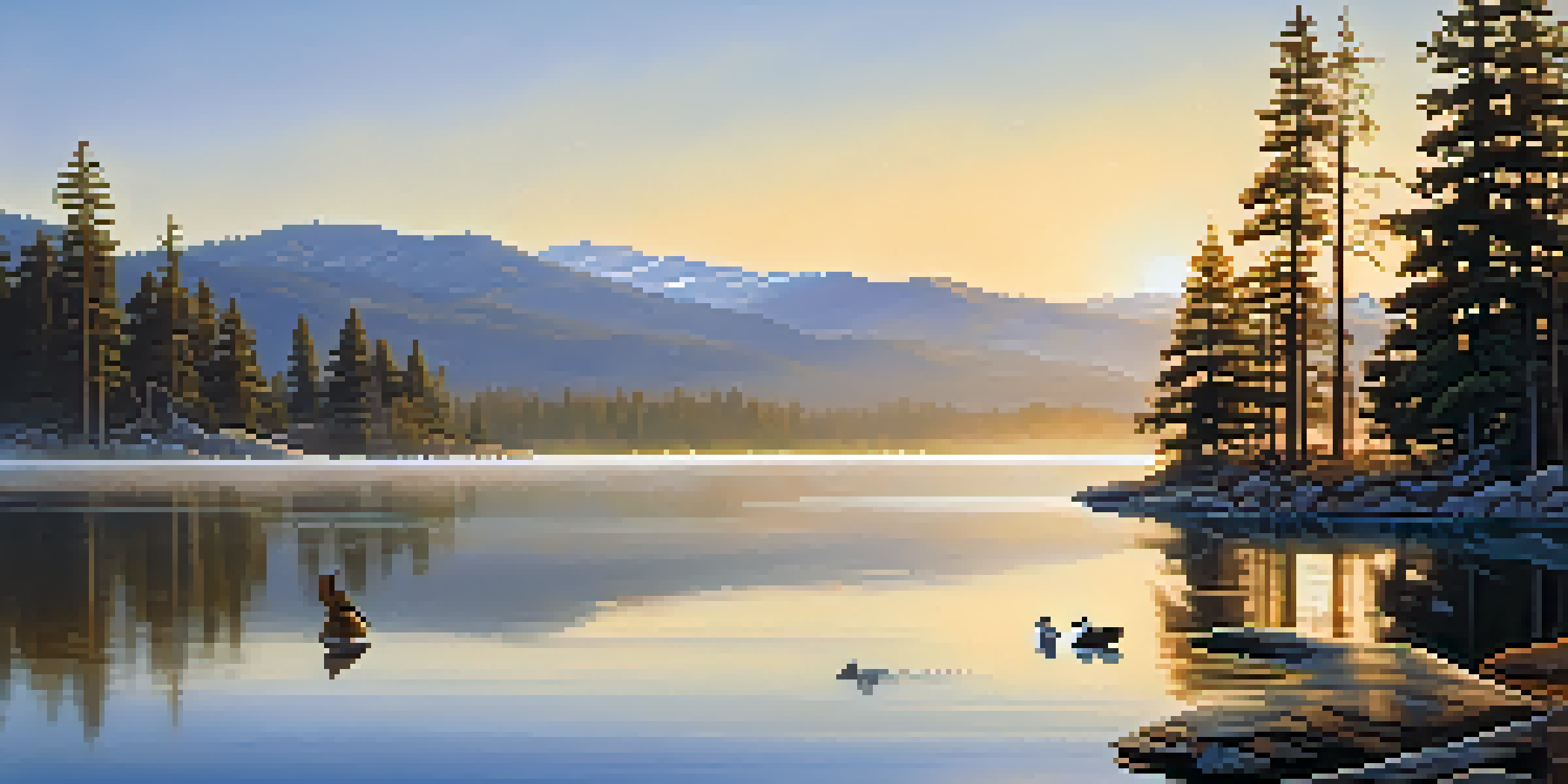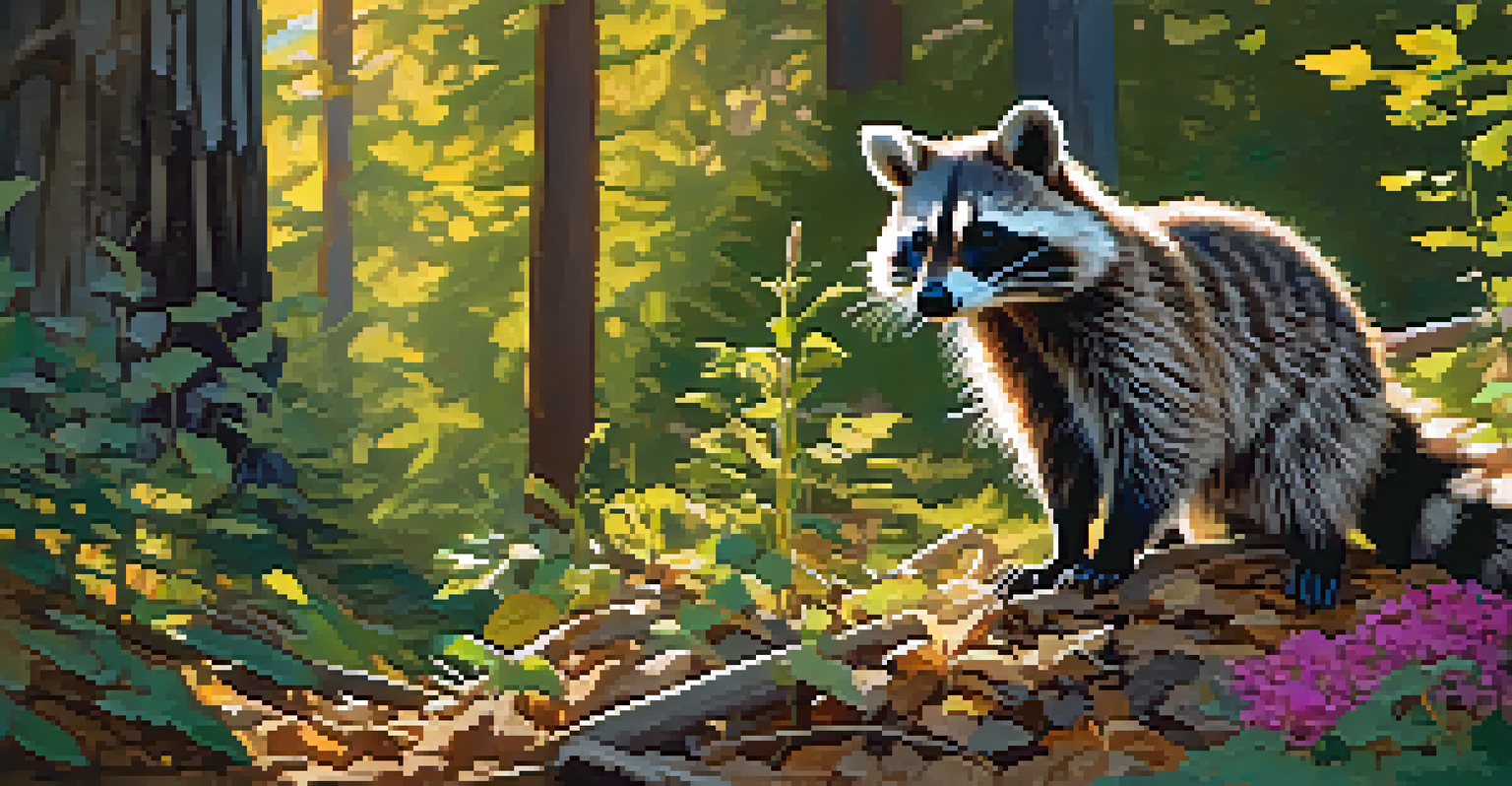Wildlife Watching in Big Bear: An Eco-Friendly Guide

Why Big Bear is a Wildlife Watching Paradise
Nestled in the San Bernardino Mountains, Big Bear is a haven for wildlife enthusiasts. With its diverse ecosystems ranging from lush forests to serene lakes, it offers habitats for various species. From majestic bald eagles soaring overhead to playful raccoons scuttling about, the area is teeming with wildlife waiting to be spotted.
In every walk with nature one receives far more than he seeks.
The unique combination of elevation and climate in Big Bear also supports a variety of habitats, making it possible to see an array of animals throughout the year. Whether you’re a seasoned birder or a casual hiker, the sheer number of species will surely captivate you. Plus, the stunning landscapes provide a breathtaking backdrop for your wildlife adventures.
As you explore, you'll find that wildlife watching here is not just an activity—it's an experience that connects you to nature. Observing animals in their natural habitat can deepen your appreciation for the environment and remind you of the importance of conservation efforts.
Best Times for Wildlife Watching in Big Bear
Timing is everything when it comes to wildlife watching in Big Bear. Early mornings and late afternoons tend to be the most active times for many animals, as they venture out to feed. During these hours, you might catch a glimpse of deer grazing or birds flitting about in search of breakfast or dinner.

Seasonality also plays a crucial role in what you can see. Spring is ideal for spotting newborn animals, while fall often showcases birds migrating south. Each season brings its own unique spectacles, so planning your visit around these times can enhance your experience significantly.
Big Bear: A Wildlife Haven
With diverse ecosystems and abundant species, Big Bear is an ideal destination for wildlife enthusiasts.
It's also worth noting that certain areas, like the shores of Big Bear Lake, offer prime viewing spots at different times of the day. By being mindful of when you head out, you can increase your chances of witnessing the awe-inspiring wildlife that calls this area home.
Eco-Friendly Practices for Wildlife Watching
When enjoying the beauty of Big Bear's wildlife, it's vital to practice eco-friendly habits. One of the simplest ways to minimize your impact is to stay on designated trails. This helps protect delicate habitats and ensures that wildlife can thrive without unnecessary disturbances.
The Earth has music for those who listen.
Keeping a respectful distance from animals is another essential practice. Observing wildlife from afar not only ensures your safety but also reduces stress on the animals. Using binoculars or a camera with a zoom lens allows you to enjoy the view without intruding on their space.
Additionally, be mindful of your waste. Always carry out what you bring in, including food scraps and litter. By leaving no trace, you contribute to the preservation of Big Bear’s natural beauty and its diverse wildlife for future generations.
Essential Gear for Wildlife Watching
Having the right gear can elevate your wildlife watching experience in Big Bear. A good pair of binoculars is a must; they allow you to observe animals without disturbing them. Opt for a lightweight, compact model that’s easy to carry on hikes.
In addition to binoculars, consider bringing a field guide to local wildlife. This can enrich your experience by helping you identify various species, whether they’re birds, mammals, or insects. It’s like having a personal tour guide right in your pocket!
Best Times for Wildlife Watching
Early mornings and late afternoons are prime times for observing wildlife, with seasonal variations enhancing the experience.
Don’t forget to pack essentials like water, snacks, and a first-aid kit, as well as appropriate clothing for the weather. Being well-prepared ensures you can focus on the wildlife around you and enjoy your adventure to the fullest.
Top Wildlife Watching Spots in Big Bear
Big Bear is dotted with several prime locations for wildlife watching. One popular spot is the Big Bear Lake itself, where you can see a variety of waterfowl and even the occasional otter. The scenic views make it a perfect place for a picnic while you observe the wildlife.
Another great location is the Pine Knot Trail, which winds through beautiful forests and offers the chance to see deer and various bird species. As you hike, take in the sounds of nature, and be on the lookout for signs of wildlife—like tracks and droppings—that hint at their presence.
Lastly, don't miss out on the Holcomb Valley area. This less-trafficked spot is known for its diverse ecosystems and is ideal for those seeking a quieter experience. With its rich wildlife and stunning views, you're sure to have an unforgettable day in nature.
Respecting Wildlife: Dos and Don'ts
Understanding how to interact with wildlife is crucial for both your safety and the animals' well-being. One key 'do' is to observe animals quietly from a distance. This allows you to appreciate their natural behaviors without causing them stress or altering their habits.
Conversely, a major 'don't' is to feed wild animals. It may seem harmless, but feeding them can lead to dependency on human food and disrupt their natural foraging habits. It’s important to remember that these animals are best left to fend for themselves.
Eco-Friendly Wildlife Practices
Practicing eco-friendly habits, such as staying on trails and observing from a distance, helps protect Big Bear’s wildlife and habitats.
Additionally, always keep pets on a leash and avoid approaching animals that seem distressed or injured. Respecting wildlife boundaries ensures that both you and the animals can enjoy the beauty of the natural world safely.
Wildlife Watching Events and Tours in Big Bear
For a more guided experience, consider joining one of the many wildlife watching events or tours in Big Bear. Local organizations often host seasonal outings that are both educational and fun. Participating in these events can enhance your understanding of the local ecosystem.
These tours typically focus on specific wildlife, such as birdwatching or tracking larger mammals like bears and mountain lions. They offer expert insights that can deepen your appreciation for the area’s biodiversity and conservation efforts.

Moreover, joining a group can also be a great way to meet fellow nature enthusiasts. Sharing stories and experiences with others who share your passion for wildlife can enrich your adventure and create lasting memories.